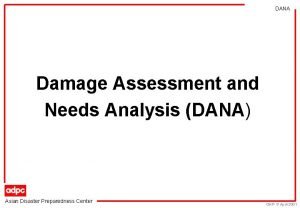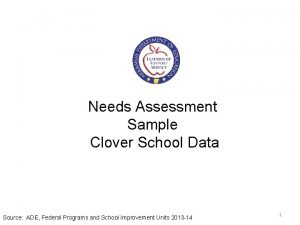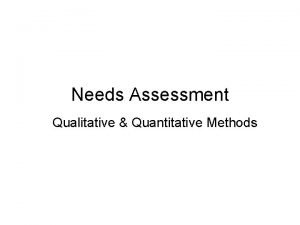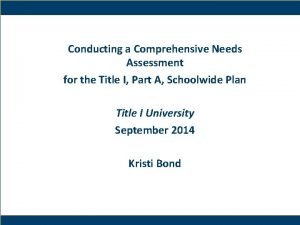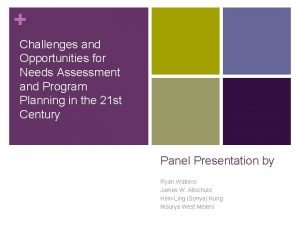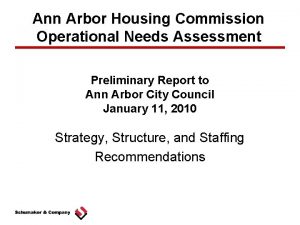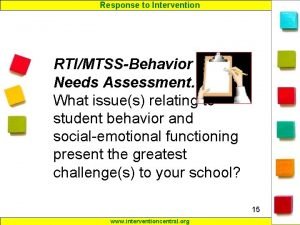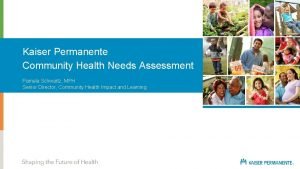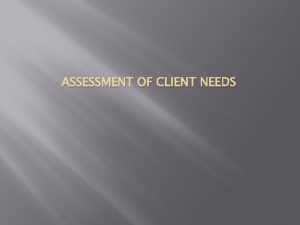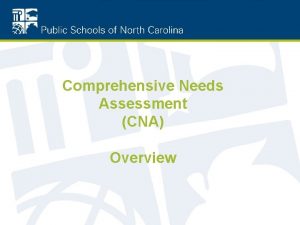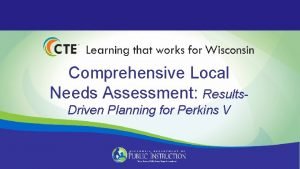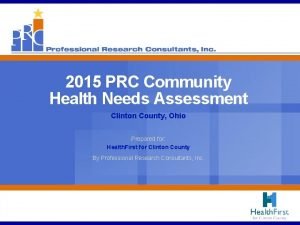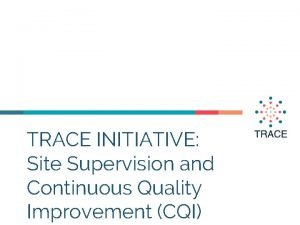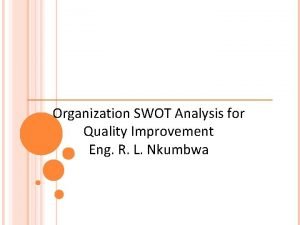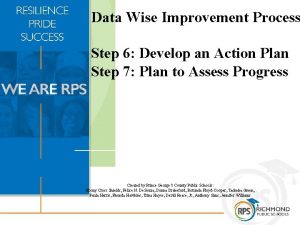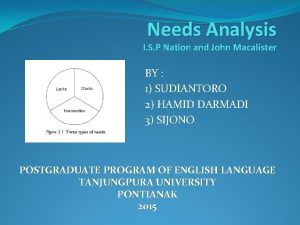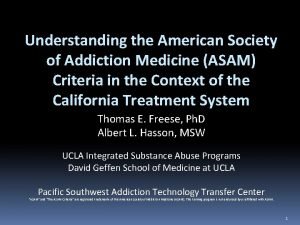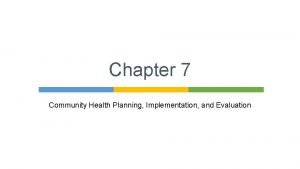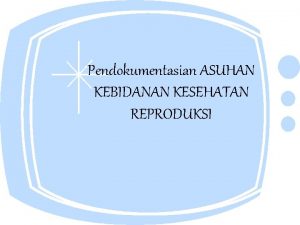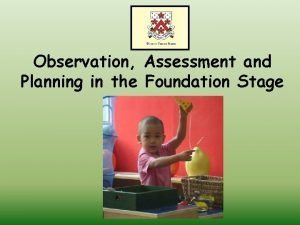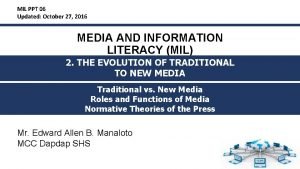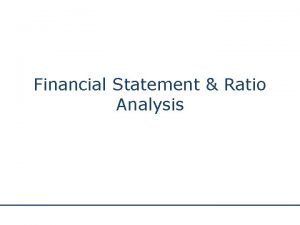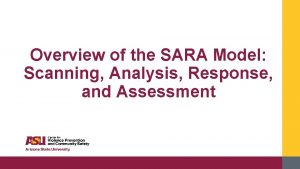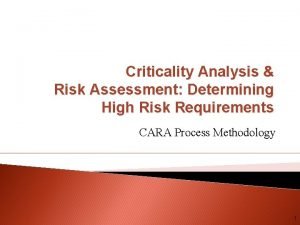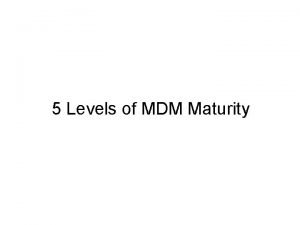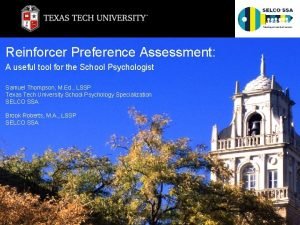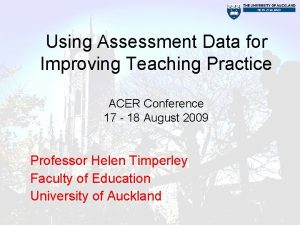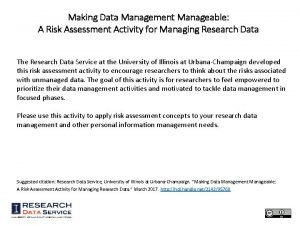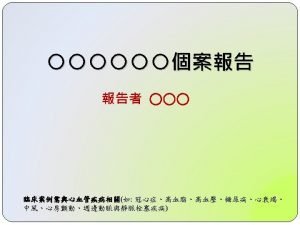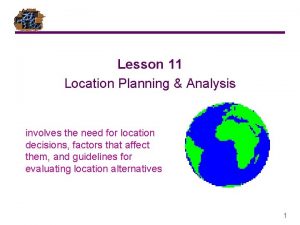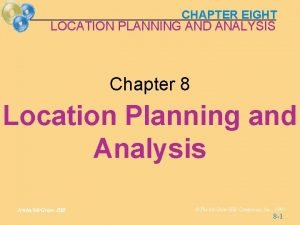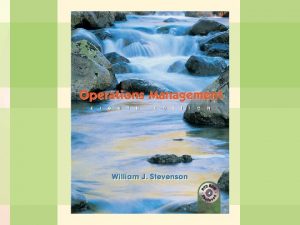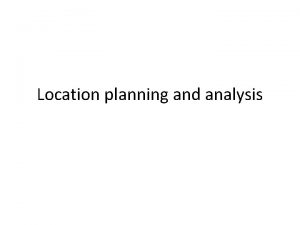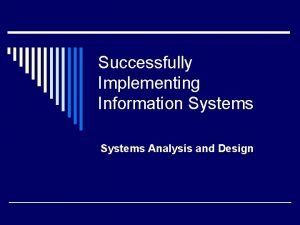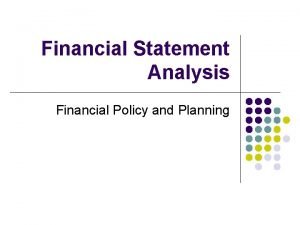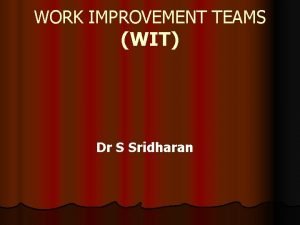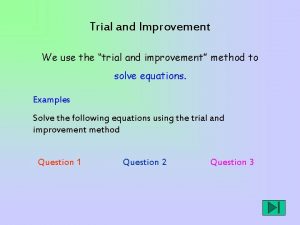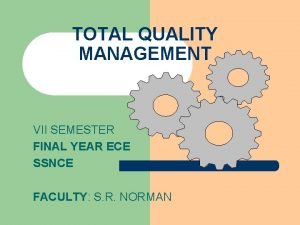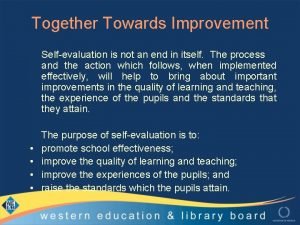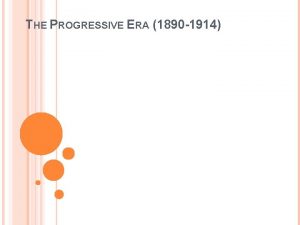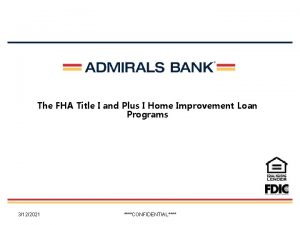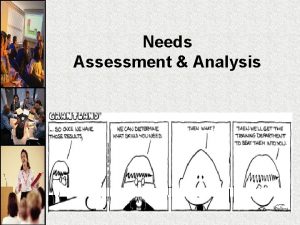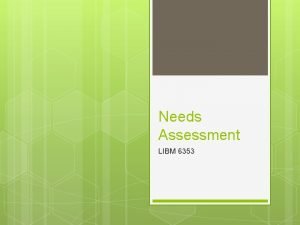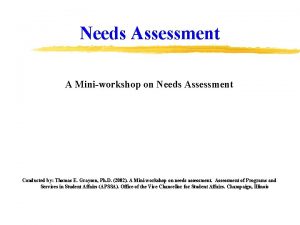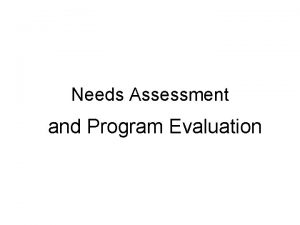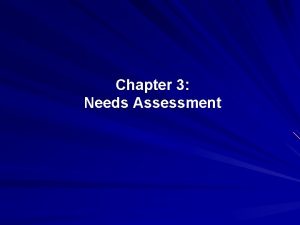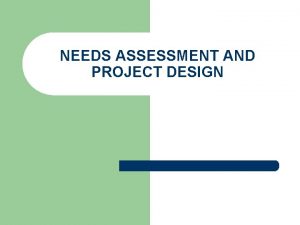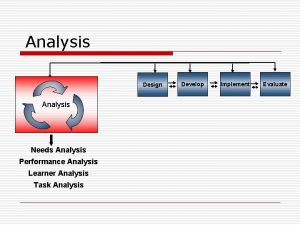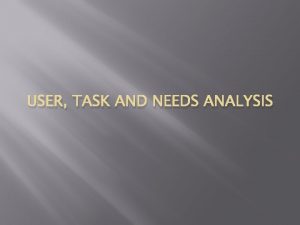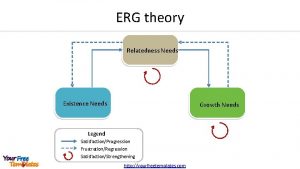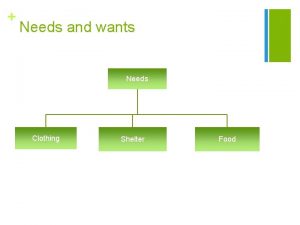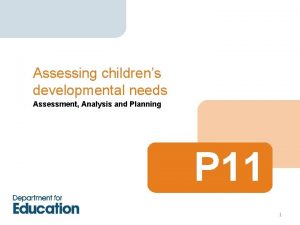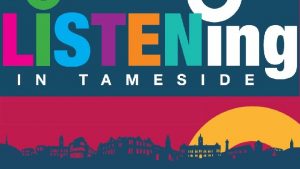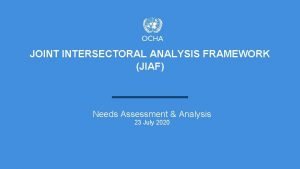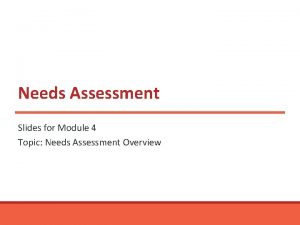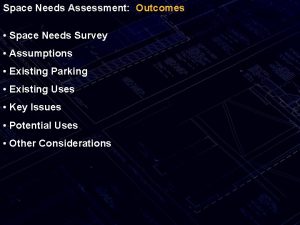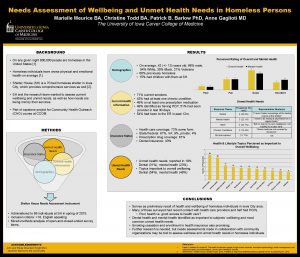IMPROVEMENT PLANNING Data Analysis Needs Assessment Improvement Planning
























































































- Slides: 88

IMPROVEMENT PLANNING

Data Analysis Needs Assessment Improvement Planning Implementation & Monitoring The purpose of improvement planning is to establish “how” we address the root cause of the problem by developing a targeted improvement plan.

taisresources. net http: //www. taisresources. net/improvement-planning /

MAKING CONNECTIONS


DATA ANALYSIS REVIEW Discuss the following : 1. What is the purpose of engaging in a thorough DATA ANALYSIS? 2. What is a PROBLEM STATEMENT? Data Analysis Needs Assessment Implementation and Monitoring Improvement Planning

SHARE YOUR THOUGHTS

NEEDS ASSESSMENT REVIEW Discuss the following : 1. What is the purpose of engaging in a thorough NEEDS ASSESSMENT ? 2. What does a ROOT CAUSE indicate about the problem statement ? Data Analysis Needs Assessment Implementation and Monitoring Improvement Planning

SHARE YOUR THOUGHTS

1 st 2 Problem Statement(s) nd Root Cause(s)

Steps for Targeted Improvement Planning 1. Establish ANNUAL GOALS 2. Select STRATEGIES 3. Establish QUARTERLY GOALS 4. Determine INTERVENTIONS

1 st Problem Statement(s) 2 Root Cause(s) nd Root Cause(s) 3 Annual Goals th 4 rd Strategies

DESIRED PERFORMANCE CURRENT PERFORMANCE

ANNUAL GOAL PROBLEM STATEMENT

PROBLEM STATEMENT ELLs have a 50% pass rate in reading ANNUAL GOAL ELL student group will have 60% pass rate on 2016 STAAR reading

ANNUAL GOAL QUALITY CHECK 1. Does the annual goal resolve the area of low performance identified in the YES problem statement?

Time-Bound Results-Based Attainable Measurable Specific S. M. A. R. T.

ANNUAL GOAL QUALITY CHECK 1. Does the annual goal resolve the area of low performance identify in the YES problem statement? 2. Is the annual goal written as a SMART goal?

ELL student group will have 60% pass rate on 2016 STAAR reading S. M. A. R. T.

ELL student group will have 60% pass rate on 2016 STAAR reading S. M. A. R. T.

ELL student group will have 60% pass rate on 2016 STAAR reading S. M. A. R. T.

ELL student group will have 60% pass rate on 2016 STAAR reading S. M. A. R. T.

ELL student group will have 60% pass rate on 2016 STAAR reading S. M. A. R. T.

ELL student group will have 60% pass rate on 2016 STAAR reading S. M. A. R. T.

PROBLEM STATEMENT QUALITY CHECK 1. Does the annual goal resolve the area of low performance identified in the problem statement? YES 2. Is the annual goal written as a SMART goal? YES

ANNUAL GOAL PROBLEM STATEMENT

1 st Problem Statement(s) 2 Root Cause(s) nd Root Cause(s) 3 rd Annual Goals

PRACTICE

PROBLEM STATEMENT QUALITY CHECK 1. Does the annual goal resolve the area of low performance identified in the problem statement? 2. Is the annual goal written as a SMART goal?

Steps for Targeted Improvement Planning 1. Establish ANNUAL GOALS 2. Select a STRATEGY(ies)

1 st Problem Statement(s) 2 Root Cause(s) nd Root Cause(s) 3 Annual Goals th 4 rd Strategies

What is a STRATEGY? A strategy is a broad overarching approach chosen to address the ROOT CAUSE. Effective implementation of a strategy should resolve the identified root cause, thus resulting in achieving the annual goal.

DESIRED PERFORMANCE CURRENT PERFORMANCE

ANNUAL GOAL PROBLEM STATEMENT

What is a STRATEGY? STRATEGIES may include: • Adopting a new instructional model • Implementing professional learning communities to increase teacher effectiveness • Implementing RTI or PBIS • Systemic change initiatives

TR AIN IN G IS NOT narrow and specific

Steps for Targeted Improvement Planning 1. Establish ANNUAL GOALS 2. Select STRATEGIES ACTION 2. 1 Research and select evidence-based practices that address the root causes

Problem Statement(s) ELLs have a 50% pass rate in reading Annual Goals ELL student group will have 60% pass rate on 2016 STAAR reading Root Cause(s) Strategies Implement sheltered instruction campus-wide Lack of teacher understanding for the instructional strategies needed to meet linguistic needs of ELLs

Steps for Targeted Improvement Planning 1. Establish ANNUAL GOALS 2. Select STRATEGIES ACTION 2. 1 Determine a how the campus is going to address the root causes to achieve the annual goal ACTION 2. 2 Assess the capacity and resources available/needed to implement the strategy

ROOT CAUSE STRATEGY Implement sheltered Lack of teacher understanding for the instruction campus-wide instructional strategies needed to meet linguistic needs of ELLs •

STRATEGY QUALITY CHECK 1. Is the STRATEGY an evidence-based approach directly addressing the root cause? YES 2. If the STRATEGY is implemented with fidelity, will it result in meeting the YES annual goal?


PRACTICE

STRATEGY QUALITY CHECK 1. Is the STRATEGY an evidence-based approach to directly address the root cause? 2. If the STRATEGY is implemented with fidelity, will it result in meeting the annual goal?

Steps for Targeted Improvement Planning 1. Establish ANNUAL GOALS 2. Select STRATEGIES 3. Establish QUARTERLY GOALS https: //region 13. wistia. com/medias/ep 44 ztrkcu

Why establish quarterly goals? QUARTERLY GOALS: • Allow a campus to chunk a year-long plan into short-term measurable chunks • Create a sense of urgency to act • Establish “quick-wins” • Track the changes in adult behavior needed to impact student performance

What is a quarterly goal? IS • A quarterly goal a SMART goal that measures the short-term impact of implementing a strategy • A quarterly goal IS NOT a quarterly breakdown of the annual goal

PROBLEM STATEMENT ELLs have a 50% pass rate in reading ANNUAL GOAL ELL student group will have 60% pass rate on 2016 STAAR reading 10% increase

Instinctually we… 10% ÷ 4 quarters = 2. 5% increase per quarter Current Performance = 50% Q 1 Goal = 52. 5% Q 2 Goal = 55% Q 3 Goal = 57. 5% Q 4 Goal = 60%

Instinctually we… 10% ÷ 4 quarters = 2. 5% increase per quarter Current Performance = 50% Q 1 Goal = 52. 5% Q 2 Goal = 55% Q 3 Goal = 57. 5% Q 4 Goal = 60%

What is a quarterly goal? IS • A quarterly goal focused on measuring the progress towards changing stakeholder (i. e. , principal, teachers, staff, parents and/or students) behaviors and practices.

• What is a quarterly goal? A fourth quarter goal IS NOT the same as annual goal.

What is a quarterly goal? • A quarterly goal IS a results-based goal • A quarterly goal IS NOT a process-based goal

What is a quarterly goal? • A quarterly goal IS a SMART goal


BREAK

Steps for Targeted Improvement Planning 1. Establish ANNUAL GOALS 2. Select STRATEGIES 3. Establish QUARTERLY GOALS

STRATEGY implementation = INTERVENTIONS = collective stakeholder behaviors & actions The collective impact of INTERVENTIONS = QUARTERLY GOALS

PRACTICE

Stakeholder Brainstorm 1. Find the blank stakeholder behavior brainstorm resource 2. For each stakeholder, brainstorm all the needed actions/behaviors needed to implement strategy

Annual Goal: ELL student group will have 60% pass rate on STAAR reading assessment in spring 2016 Root Cause: Lack of teacher understanding for appropriate instructional strategies to meet ELL needs. Strategy: Implement sheltered instruction strategies campus-wide District BE/ESL Department Provide training Administrative Team Teacher-Learning Teacher-Practice Student-Learning Instructional Coaches Design training plan and calendar Teachers will understand how to incorporate all four language domains into lessons Teachers will incorporate language objectives into lesson plans Students are making growth in language proficiency levels Conduct walkthroughs Design walkthrough protocol Teachers will understand linguistic instructional strategies Teacher will incorporate multiple language domains into daily lessons Students’ academic vocabulary increases Provide feedback Do walkthrough to monitor implementation and calibrate with campus admin Conduct walkthroughs Teachers will incorporate linguistic instructional strategies Provide follow-up support training Provide feedback to campus leadership team Provide feedback to teachers on walkthroughs Evaluate strategy implementation Provide coaching and resources Assist admin team in designing training plan and calendar Attend training Evaluate strategy

Stakeholder Brainstorm 1. Find the blank stakeholder behavior brainstorm resource 2. For each stakeholder, brainstorm all the needed actions/behaviors needed to implement strategy. 3. Then, regardless of stakeholder, order the actions in the order they need to be done.

Annual Goal: ELL student group will have 60% pass rate on STAAR reading assessment in spring 2016 Root Cause: Lack of teacher understanding for appropriate instructional strategies to meet ELL needs. Strategy: Implement sheltered instruction strategies campus-wide Administrative Team Teacher-Learning Teacher-Practice Student-Learning Instructional Coaches Design training plan and calendar Teachers will understand how to incorporate all four 5 language domains into lessons Teachers will incorporate language objectives into lesson 6 plans Students are making growth in language proficiency levels Conduct walkthroughs Teachers will understand linguistic 13 instructional strategies Teacher will incorporate multiple 7 language domains into daily lessons Students’ academic vocabulary increases 15 2 Design walkthrough protocol 3 Conduct walkthroughs 8 Teachers will 14 incorporate linguistic instructional strategies Provide feedback to 10 teachers on walkthroughs Evaluate strategy 17 implementation 1 16 Evaluate strategy 4 8 Provide feedback 10 12 Provide follow-up support training 11 Provide coaching and resources 1 Attend training 17 17 District BE/ESL Department Provide training Evaluate strategy Do walkthrough to monitor implementation 8 and calibrate with campus admin Provide feedback to 9 campus leadership team Assist admin team in 2 designing training plan and calendar

JUNE/ JULY • Admin and ICs attend training • Design training plan and calendar with assistance from BE/ESL dept. • Design walkthrough protocol Q 1 Aug Sept Oct Q 2 Nov Dec Jan • BE/ESL dept. delivers training to staff • Teachers will learn how to incorporate all four language domains into lessons. • Teachers will incorporate language objectives into lesson plans. • Teachers will incorporate all four language domains into lessons. • Admin and ICs will conduct walkthroughs with BE/ESL dept • BE/ESL department will provide feedback to admin team • Admin and ICs provide feedback to teachers • ICs provide coaching and support • ICs provide follow-up training • Teachers will understand linguistic instructional strategies and how to incorporate into lessons. • Teachers will incorporate linguistic instructional strategies into lessons. Q 3 Feb Mar • Students’ academic vocabulary increases. • Intervention groups based on assessment results • The language proficiency levels of ELLs will increase. • Evaluate strategy implementation. • Staff survey • Data review • Identify training needs for 16 -17 Q 4 April May June

JUNE/ JULY • Admin and ICs attend training • Design training plan and calendar with assistance from BE/ESL dept. • Design walkthrough protocol st Q 1 Aug Sept Oct Q 2 Nov Dec Jan By the end of the 1 nine • weeks, BE/ESL dept. delivers training to staff 100% of teachers • are Teachers will learnappropriate how to incorporate including all four language domains into lessons. language objectives in their • Teachers will incorporate language lesson into plans. provide objectives lesson the opportunity • students Teachers will incorporate all four to language into language lessons. work indomains multiple • Admin and ICs will conduct domains. walkthroughs with BE/ESL dept • BE/ESL department will provide feedback to admin team • Admin and ICs provide feedback to teachers • ICs provide coaching and support • ICs provide follow-up training • Teachers will understand linguistic instructional strategies and how to incorporate into lessons. • Teachers will incorporate linguistic instructional strategies into lessons. Q 3 Feb Mar • Students’ academic vocabulary increases. • Intervention groups based on assessment results • The language proficiency levels of ELLs will increase. • Evaluate strategy implementation. • Staff survey • Data review • Identify training needs for 16 -17 Q 4 April May June

A QUARTERLY GOAL is focused on RESULTS 100% of teachers received training in sheltered instruction PROCESS-BASED By the end of the 1 st nine weeks, 100% of teachers are including appropriate language objectives in their lesson plans RESULTS-BASED By the end of the 1 st nine weeks, 100% of teachers are including appropriate language objectives in RESULTS-BASED & STUDENT-CENTERED their lesson plans to provide students the opportunity to work in multiple language domains.

JUNE/ JULY • Admin and ICs attend training • Design training plan and calendar with assistance from BE/ESL dept. • Design walkthrough protocol st Q 1 Aug Sept Oct Q 2 Nov Dec Jan By the end of the 1 nine • weeks, BE/ESL dept. delivers training to staff 100% of teachers • are Teachers will learnappropriate how to incorporate including all four language domains into lessons. language objectives in their • Teachers will incorporate language lesson into plans. provide objectives lesson the opportunity • students Teachers will incorporate all four to language into language lessons. work indomains multiple • Admin and ICs will conduct domains. walkthroughs with BE/ESL dept • BE/ESL department will provide st semester, By the end of the 1 feedback to admin team are in at least • students Admin and ICsworking provide feedback to two language domains in 80% of teachers classes observed. • ICs provide coaching and support • ICs provide follow-up training By the end of March, 80% • Teachers will understand of teachers arelinguistic instructional strategies and how to incorporating vocabulary incorporate into lessons to • strategies Teachers willinto incorporate linguistic instructional into lessons. improvestrategies students’ • Students’ academic vocabulary. Q 3 Feb Mar increases. • Intervention groups based on assessment results • The language proficiency levels of ELLs will increase. • Evaluate strategy implementation. • Staff survey • Data review • Identify training needs for 16 -17 Q 4 April May June

QUARTERLY GOAL QUALITY CHECK 1. Is the quarterly goal a SMART goal? 2. Is the quarterly goal focused on measuring the degree of change in stakeholder behavior expected in the next 90 days? 3. Does the quarterly goal measure the implementation of the strategy?

JUNE/ JULY • Admin and ICs attend training • Design training plan and calendar with assistance from BE/ESL dept. • Design walkthrough protocol st Q 1 Aug Sept Oct Q 2 Nov Dec Jan By the end of the 1 nine • weeks, BE/ESL dept. delivers training to staff 100% of teachers • are Teachers will learnappropriate how to incorporate including all four language domains into lessons. language objectives in their • Teachers will incorporate language lesson into plans. provide objectives lesson the opportunity • students Teachers will incorporate all four to language into language lessons. work indomains multiple • Admin and ICs will conduct domains. walkthroughs with BE/ESL dept • BE/ESL department will provide st semester, By the end of the 1 feedback to admin team are in at least • students Admin and ICsworking provide feedback to two language domains in 80% of teachers classes observed. • ICs provide coaching and support endfollow-up of March, 80% • By. ICsthe provide training of teachers arelinguistic • Teachers will understand instructional strategies and how to incorporating vocabulary incorporate into lessons. strategies into lessons to • Teachers will incorporate linguistic improve students’ instructional strategies into lessons. academic vocabulary as • Students’ academic vocabulary reflected increases. by walkthroughs. • Intervention groups based on assessment results By mid-June, campus leadership • The language proficiency of will review multiple datalevels sources ELLs will increase. to determine the implementation. effectiveness • Evaluate strategy of • strategy and to identify Staff survey • Datato review barriers address through • Identify training needs for 16 -17 planning. Q 3 Feb Mar Q 4 April May June


PRACTICE

Quarterly Goal Development 1. Group stakeholder behaviors by quarter 2. Choose one quarter and develop a quarterly goal 3. Verify against Is/Is Not chart 4. Record quarterly goal in template

RESOURCES • Quarterly planning video at www. tcdss. net • Guidance documents at www. taisresources. net • Stakeholder graphic organizer handout

BREAK

taisresources. net http: //www. taisresources. net/improvement-planning/

SHARE YOUR THOUGHTS

KEY CONSIDERATIONS 1. Ensure that your campus has identified the data source that will be used to monitor the quarterly goals 2. Quarterly goals are checkpoints for your strategy implementation 3. Quarterly goals will be different based on quarterly interventions and targets

Steps for Targeted Improvement Planning 1. Establish ANNUAL GOALS 2. Select STRATEGIES 3. Establish QUARTERLY GOALS 4. Determine INTERVENTIONS

What are INTERVENTIONS? INTERVENTIONS are the individual actions necessary to implement a STRATEGY

STRATEGY implementation = INTERVENTIONS = stakeholder behaviors & actions The collective impact of INTERVENTIONS = QUARTERLY GOALS

• Admin and ICs attend training • Design training plan and calendar with assistance from BE/ESL dept. • Design walkthrough protocol Q 1 Aug Sept Oct • BE/ESL dept. delivers training to staff • Teachers will learn how to incorporate all four language domains into lessons • Teachers will incorporate language objectives into lesson plans. • Teachers will incorporate all four language domains into lessons • Admin and ICs will conduct walkthroughs with BE/ESL dept • BE/ESL department will provide feedback to admin team • Admin and ICs provide feedback to teachers • ICs provide coaching and support • ICs provide follow-up training • Teachers will understand linguistic instructional strategies and how to incorporate into lessons. • Teachers will incorporate linguistic instructional strategies into lessons • Students’ academic vocabulary increases • Intervention groups based on assessment results • The language proficiency levels of ELLs will increase • Evaluate strategy implementation • Staff survey • Data review • Identify training needs for 16 -17 https: //region 13. wistia. com/medias/nen 2 fen 337

Stakeholder Actions • • • Design walk-through process BE/ESL dept. delivers training to staff Teachers will learn how to incorporate all four language domains into lessons Teachers will incorporate language objectives into lesson plans Teachers will incorporate all four language domains into lessons Admin and ICs will conduct walkthroughs with BE/ESL dept INTERVENTIONS Design walkthrough protocol BE/ESL staff delivers training to staff and administrative team; sets expectation for language objective to be included in lesson plans Teachers work on language objectives during planning in PLCs and include in lesson plans; lesson plans reviewed and feedback given individually and through PLCs Admin team and IC conduct walkthroughs with BE/ESL district support to provide feedback on implementation and to ensure inter-rater reliability



INTERVENTION QUALITY CHECK 1. Do the interventions outline the specific actions necessary to implement the strategy? 2. Will the data sources identified adequately measure successful implementation of the intervention? 3. Will implementation of the intervention result in meeting the quarterly goal?

KEY CONSIDERATIONS 1. Four is not a magic number of interventions 2. Multiple behaviors could be combined to develop one intervention 3. One behavior could result in multiple interventions 4. Sometimes additional details will need to be added to a behavior in order to develop an intervention 5. Multiple data sources could be used to measure the impact of an intervention

PRACTICE

Intervention Development 1. Using the stakeholder brainstorm chart for the quarterly goal you developed, determine interventions 2. Set data sources for these interventions 3. Record interventions in the 16 -17 template
 Damage assessment and needs analysis
Damage assessment and needs analysis Needs improvement
Needs improvement Primary needs and secondary needs
Primary needs and secondary needs Primary needs and secondary needs
Primary needs and secondary needs Primary needs and secondary needs
Primary needs and secondary needs Strategic gender needs and practical gender needs
Strategic gender needs and practical gender needs Need analysis esp
Need analysis esp Adult needs and strengths assessment
Adult needs and strengths assessment Ade needs assessment
Ade needs assessment Quantitative and qualitative difference
Quantitative and qualitative difference Community needs assessment steps
Community needs assessment steps Challenges of needs assessment
Challenges of needs assessment Ann arbor housing commission
Ann arbor housing commission Mtss needs assessment
Mtss needs assessment Pamela schwartz
Pamela schwartz Transportation needs assessment
Transportation needs assessment Clients needs assessment
Clients needs assessment Model taba
Model taba 9 box exercise
9 box exercise Comprehensive needs assessment
Comprehensive needs assessment Comprehensive local needs assessment
Comprehensive local needs assessment Health needs assessment
Health needs assessment Needs assessment template
Needs assessment template Continuous quality improvement program planning worksheet
Continuous quality improvement program planning worksheet Swot analysis for school improvement plan
Swot analysis for school improvement plan Swot analysis quality improvement
Swot analysis quality improvement Swot analysis examples for students
Swot analysis examples for students Data wise action plan template
Data wise action plan template Data driven quality
Data driven quality Needs and wants analysis
Needs and wants analysis Needs analysis necessities lacks wants
Needs analysis necessities lacks wants Needs analysis esl
Needs analysis esl Training design example
Training design example Individual needs analysis
Individual needs analysis Content analysis is a type of secondary data analysis
Content analysis is a type of secondary data analysis Define data collection method
Define data collection method Data preparation and basic data analysis
Data preparation and basic data analysis Data acquisition and data analysis
Data acquisition and data analysis Learning principle in portfolio assessment
Learning principle in portfolio assessment Static assessment vs dynamic assessment
Static assessment vs dynamic assessment Portfolio assessment matches assessment to teaching
Portfolio assessment matches assessment to teaching Asam assessment ladder
Asam assessment ladder Microsoft assessment and planning
Microsoft assessment and planning Community health planning and implementation certificate
Community health planning and implementation certificate Soap klimakterium
Soap klimakterium Observation, assessment and planning cycle
Observation, assessment and planning cycle Cloudamize documentation
Cloudamize documentation Mil ppt
Mil ppt Lower end media users examples
Lower end media users examples Business impact analysis vs risk assessment
Business impact analysis vs risk assessment Financial analysis assessment
Financial analysis assessment Sara model
Sara model Criticality analysis and risk assessment
Criticality analysis and risk assessment Cost assessment data enterprise
Cost assessment data enterprise For a level 2 matured organization master data management
For a level 2 matured organization master data management Data assessment engine
Data assessment engine Free operant preference assessment
Free operant preference assessment Using assessment data for improving teaching practice
Using assessment data for improving teaching practice Data management risk assessment
Data management risk assessment Biochemical data, medical tests, and procedures (bd)
Biochemical data, medical tests, and procedures (bd) Paired stimulus preference assessment data sheet
Paired stimulus preference assessment data sheet Strategic planning vs tactical planning
Strategic planning vs tactical planning Planning balance sheet in urban planning
Planning balance sheet in urban planning Scenario planning workforce planning
Scenario planning workforce planning Proactive planning and reactive planning
Proactive planning and reactive planning Perencanaan agregat ppt
Perencanaan agregat ppt Long term plan and short term plan
Long term plan and short term plan Language policy and planning slideshare
Language policy and planning slideshare Aggregate capacity planning
Aggregate capacity planning Aggregate planning is capacity planning for
Aggregate planning is capacity planning for Role of sourcing in supply chain
Role of sourcing in supply chain Location planning and analysis
Location planning and analysis 5ws in event management
5ws in event management Location planning and analysis
Location planning and analysis Location planning and analysis
Location planning and analysis Location planning management
Location planning management Location planning analysis
Location planning analysis Transition matrix hr
Transition matrix hr Financial analysis planning and forecasting
Financial analysis planning and forecasting Disaster recovery planning in system analysis and design
Disaster recovery planning in system analysis and design Financial statement analysis and planning
Financial statement analysis and planning Work improvement team
Work improvement team Trial and improvement
Trial and improvement Four improvement strategies in tqm
Four improvement strategies in tqm Together towards improvement
Together towards improvement Promoting moral improvement
Promoting moral improvement Fha title 1 home improvement loan
Fha title 1 home improvement loan Performance improvement plan examples
Performance improvement plan examples Classes of supply army
Classes of supply army
